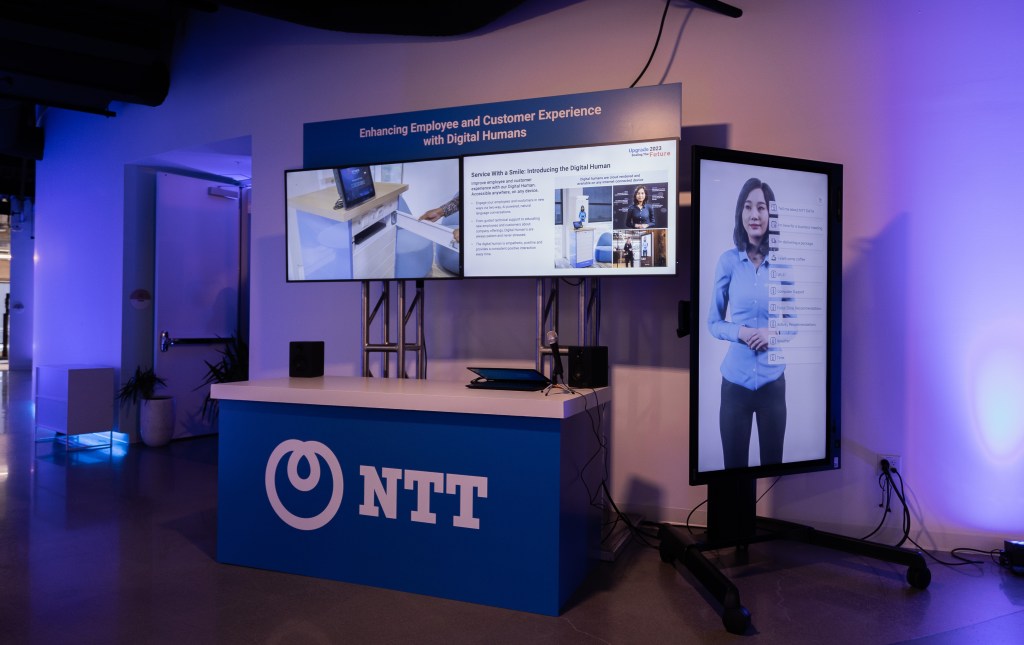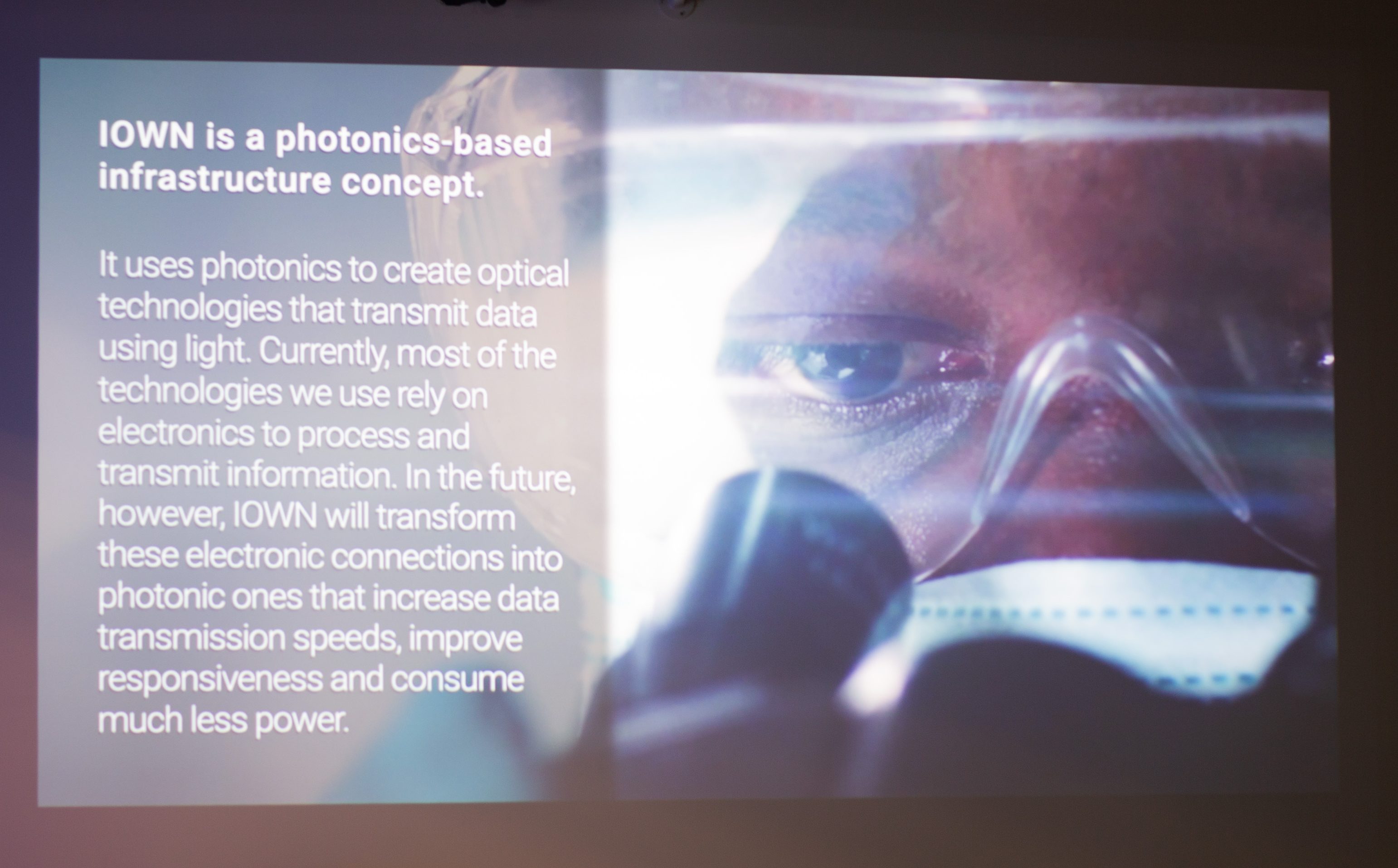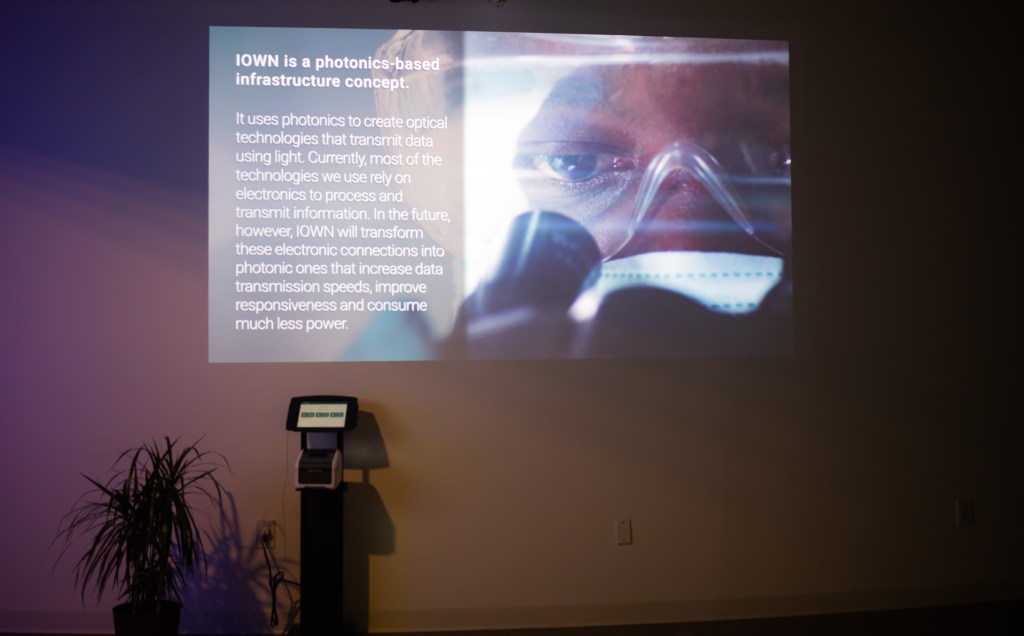
The Upgrade 2023 annual research summit opened on March 15 with an exhibition at the NTT Experience Center (XC) in downtown San Francisco. Covering a wide range of technologies developed by various groups within NTT, the two dozen demonstrations on the exhibit floor represented different points in the innovation lifecycle, from fundamental research to conceptual use cases to applied R&D to deployed services. There was even a theatre-demo of a market-ready consumer electronics device.
A leading theme of the exhibit, which remained open for Day 2 of Upgrade 2023, was the Innovative Optical and Wireless Network (IOWN), an optically centered initiative launched by NTT in 2019 to enable high-speed, large-capacity communication that transcends the limits of conventional infrastructure. A foundational element of IOWN is an open and disaggregated architecture called the All Photonic Network (APN), which is inherently faster and more sustainable than traditional networks requiring optical-to-electrical (and vice versa) conversion.
Established on a ten-year timeline, IOWN is hitting milestones, with APN in the lead. The IOWN Global Forum (GF), which now encompasses 117 industry and academic partners, published its first release of the APN architecture document in 2022. According to Atsuko Oka, Executive VP and Head of NTT R&D Planning, who spoke at Upgrade 2023, APN-based services commercially launched in Japan on March 16, as confirmed in this article in the Asahi Shimbun.
Comprised of transceiver, gate and interchange devices, APN achieves data transfers with very high throughput and very low latency. One demo on display showed APN devices that can transmit data at a record-breaking 1.2 terabits per second. Given such performance, APN can enable a variety of new use cases. Three displays at the XC Center showed aspects of APN enabling the stable communication environment required for remote support and guidance at manufacturing plants. Another exhibit illustrated APN’s “Cognitive Foundation,” which supports automatic allocation of networking, processing power, and other resources. This capability of APN can significantly reduce time and human engagement and accelerate productivity in companies using it.
Several exhibits showed how IOWN technologies can drive greener and more efficient approaches to urban challenges. One focused on delivering greater energy efficiency for real-time processing of data-sensor streams in smart cities; another on simulating land-use interventions, leveraging an MIT-based application, to reduce a city’s CO2 emissions.

Other green innovations on display not directly related to IOWN included batteries and circuits developed in collaboration with the University of Tokyo that contain no scarce elements or hazardous substances; and artificial photosynthesis technology that could absorb and manage CO2 in the atmosphere, as plants do in nature. NTT DATA is already using AI, edge computing and other technological advantages to drive sustainable value chains, manage carbon measurement, and aid organizations with regulatory compliance, as shown in another exhibit and discussed further in a presentation on Day 2 by Bennett Indart, VP NTT Smart World Solutions.
For more on additional exhibits at the NTT XC and talks on Day 2, please see our continuing coverage of Upgrade 2023.


